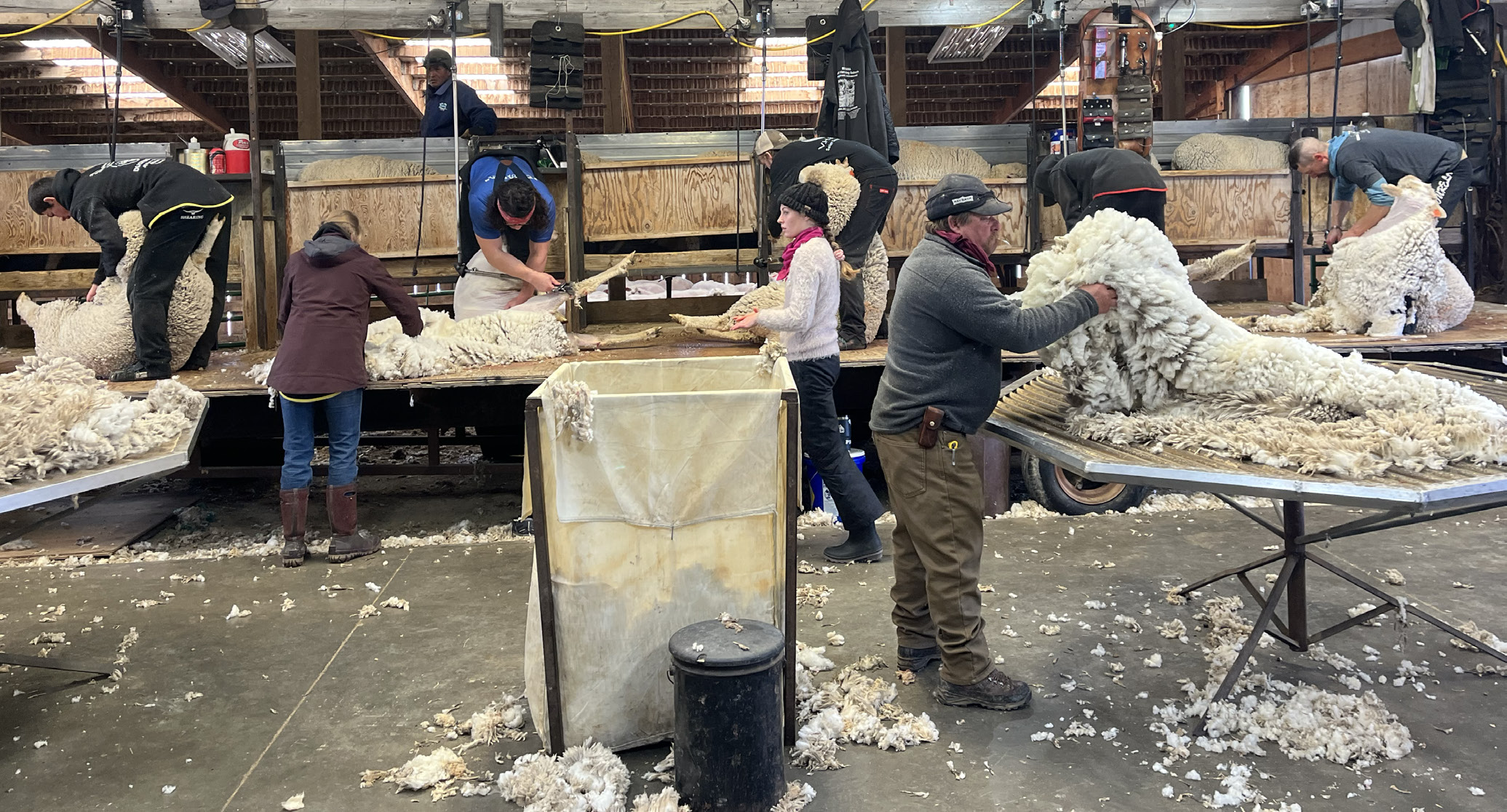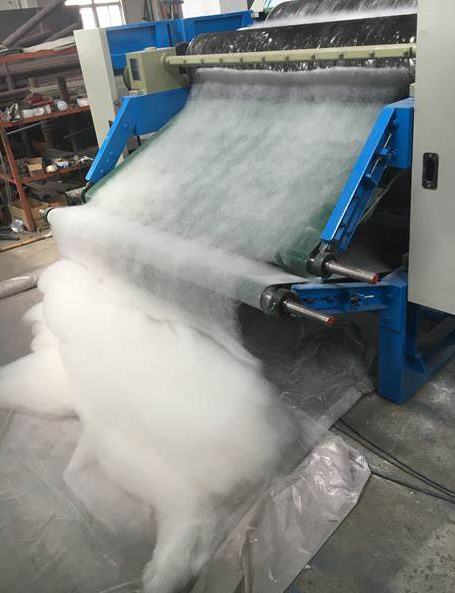Ask Steward – From Sheep to Sweater: The Story of Wool Processing
Fine wool production remains a foundational part of Montana’s agricultural economy. In 2023 Montana’s wool clip produced 1.36 million pounds valued at $2.76 million. This ranks Montana third in the country for wool price per pound.
Wool processing begins at the sheep, when sheep shearers follow a well-established pattern to shear the fleece of the sheep in one whole piece. Dedicated wool handlers throw the fleece onto the skirting table where dirty, short, and less desirable pieces of wool and some debris are pulled off and separated from whole fleeces. A wool classer then visually determines fleece quality by identifying wool staple (a cluster of fibers) length and strength, and fiber diameter.
The skirted, unwashed fleeces are sorted by fiber diameter and stacked into a bale, where it will be pressed together for more efficient handling and shipping. Each bale contains approximately 50 fleeces and weighs 400 pounds. When shearing season across the state concludes, the collective wool bales are sold through cooperative wool pools or to individual wool buyers. Wool buyers, like Center of the Nation Wool in Billings, sell the wool to different processors based on product needs.

Photo: Macy Collins
Fleeces with a thinner fiber diameter will typically sell to clothing processors, while coarser fleeces will likely sell to processors who make blankets, outerwear, and carpet yarns. Upon arrival at the processing mill, all wool will be scoured. Scouring is the washing process that gently cleans dirt, vegetable matter, and grease from the wool fibers. The clean wool is mechanically blended with other lots of wool to create a batch that has the characteristics needed for the end products. Batches are typically dyed after blending, however wool’s unique ability to absorb dye deeply and easily allows dying to be effective at any stage.
The clean, dry, and dyed wool is carded. The carding process sends the wool through wire rollers to align the fibers in the same direction. Carded wool is referred to as roving. Spinning machines repeatedly twist the roving together into yarns of many varieties. This yarn can be sold separately or is knitted or weaved into cloth. Woven cloth requires two sets of yarn, interlaced at right angles in a loom, which weaves the warp (stationary yarn that is vertically attached to the loom) and weft (woven yarn that moves over and under the warp) together to form a variety of woven fabrics. The fabrics can be made into base layer clothing, bulky outerwear, blankets, socks, and other end products. Quality control is a key part of manufacturing fabric, and removes clothes with broken threads or seams, color variations and other imperfections.
The final step in the wool processing system is controlled shrinkage. The cloth will have moisture and heat applied, which causes it to shrink a controlled amount, improving texture and tightening the weave. Before the product is sold, different finishing methods based on end use are applied to increase longevity and resistance to moths, stains, shrinkage, and moisture. Processing wool is complicated, yet refined, many step system that requires many industry partners. From sheep producers to wool buyers to knitters to regular consumers, wool plays a unique role in their everyday life.

Photo: Changshu Hongyi Nonwoven Machinery Co., Ltd
A wool carding machine aligns the fibers.
Macy Collins is an MSU Graduate Student in Animal and Range Sciences.
